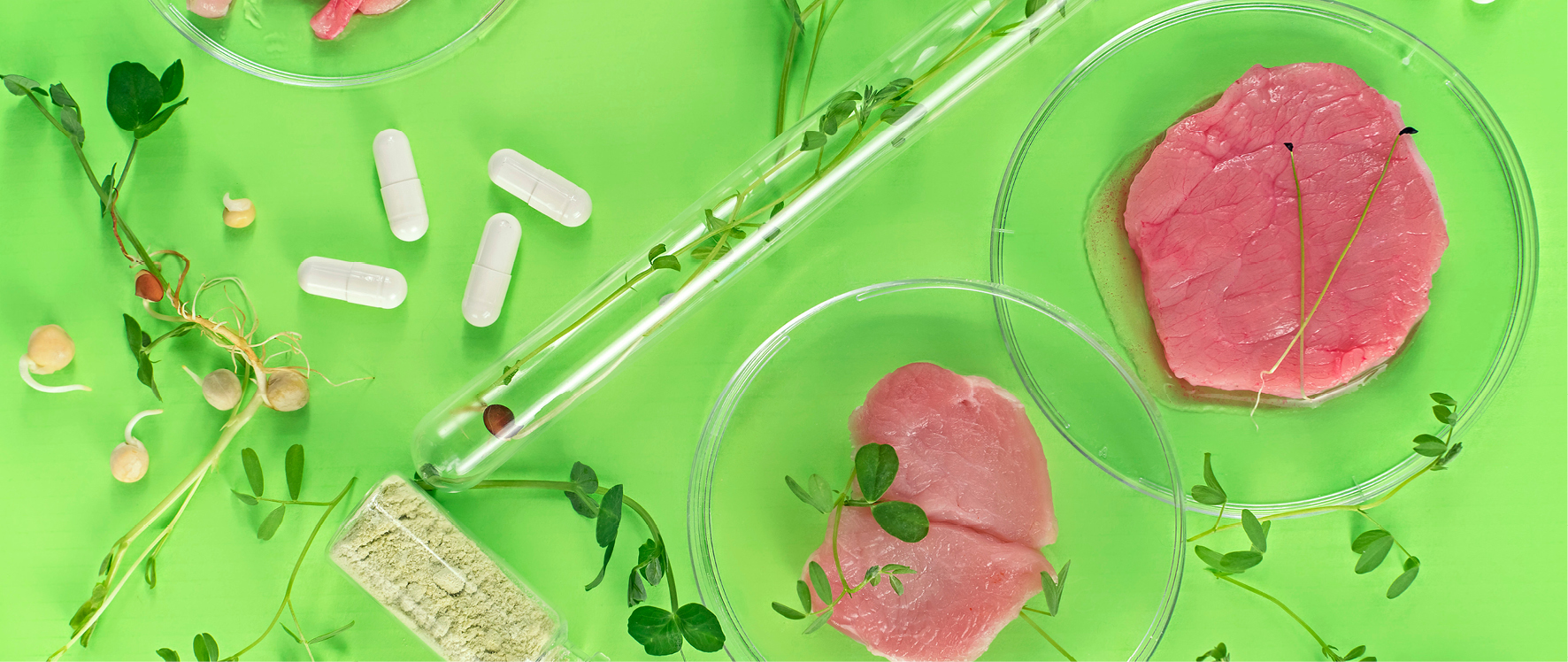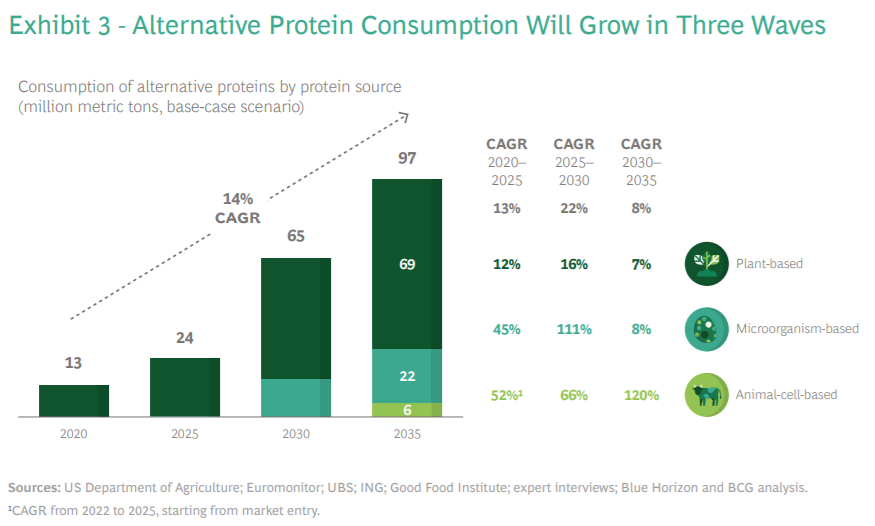
From plant-based to cellular agriculture
Alternative proteins have evolved from a niche product to a mainstream industry in just a few short years. But the trend we’re experiencing is only the beginning of the change: according to the Boston Consulting Group’s report Food for Thought: The Protein Transformation, by 2035 alternative proteins will be able to fully compete in taste, texture and price with traditional animal proteins, and 11% of all meat, seafood, eggs and dairy products consumed worldwide are expected to be of a non-animal origin.
Protein transformation will be driven by consumer interest in consuming products from alternative proteins, and this will depend on how far technology can advance to develop products similar to animal products in terms of taste, texture, quality and nutritional value. Meat substitutes have already been on the market for several years now, and by 2023 it is expected that their cost, taste and texture will be equal to that of conventional meat. For microorganism-based products, the scenario moves to 2025 and to 2032 for animal cell-based products, such as cultivated meat. As shown in the chart, consumption of alternative proteins will be divided into three areas, with plant-based products leading the trend, followed by those made from microorganisms and cell cultures.

[Source: Food for Thought: The Protein Transformation, Boston Consulting Group, March 24, 2021)
Plant-based and fermented products are already in the market, but what about cellular agriculture products?
Cellular agriculture is a branch of biotechnology that focuses on the production of animal-derived products from cell cultures. The two main approaches to cell agriculture are tissues engeneering and fermentation. In particular, tissue engeneering isolates animal cells with certain properties such as the ability to grow rapidly and differentiate into the desired product. Once isolated, cells are fed with nutrients such as vitamins, salts and proteins to encourage growth. They are then transferred to a controlled environment where they undergo processes that allow them to differentiate, thus forming mature cells with the right texture to create the desired product. Similarly, in fermentation technology, animal genes are introduced into host cell, which in turn are fed to produce the animal protein of interest.
Cellular agriculture aims to produce animal-derived products without using animals, with benefits to both the environment and animal well-being. These products are complementary to plant-based and fermentation products, which are driving the alternative protein revolution. One of the reasons to look at when talking about cellular agriculture in the report entitled “90 reason to consider cellular agriculture” are environmental, social and health issues. For example, using this technology could decrease the risk of global hunger, as products from cellular agriculture will be available regardless of the circumstances of inacessibility such as natural disasters or food security. According to the report, cellular agriculture could meet the growing demand for animal products, supporting a global population increase of nearly 10 billion by 2050.
What about consumers acceptance?
According to the article drawn up by the ProVeg Incubator, consumers are intrigued by products made from cellular agriculture, and are therefore willing to try them and incorporate them into their diets. In particular, according to a study conducted by the University of Michigan, in the United States about 35% of people surveyed were willing to try and buy meat from cellular agriculture. In Europe, however, consumers seem to be more reluctant about these products. Producers of cell culture products need to gain the trust of consumers by highlighting the environmental, animal well-being and human benefits of cell culture products. That’s because according to an article titled The Name Game: Cultured Meat Could Suffer The Same Fate As GMOs, New Research Suggests in Forbes, the term used to call cell-cultured meat, for example, can be a determining factor in consumer purchasing decisions. When we talk about cultivated meat we tend to focus on the technological aspect of the product, which however generates in the consumer a feeling of unnatural product.
Along with consumer approval, there are other regulation and cost issues that need to be addressed. However, once price equality is achieved, cultured meat products have the potential to be viable substitutes for conventional animal meat as a more sustainable alternative.
